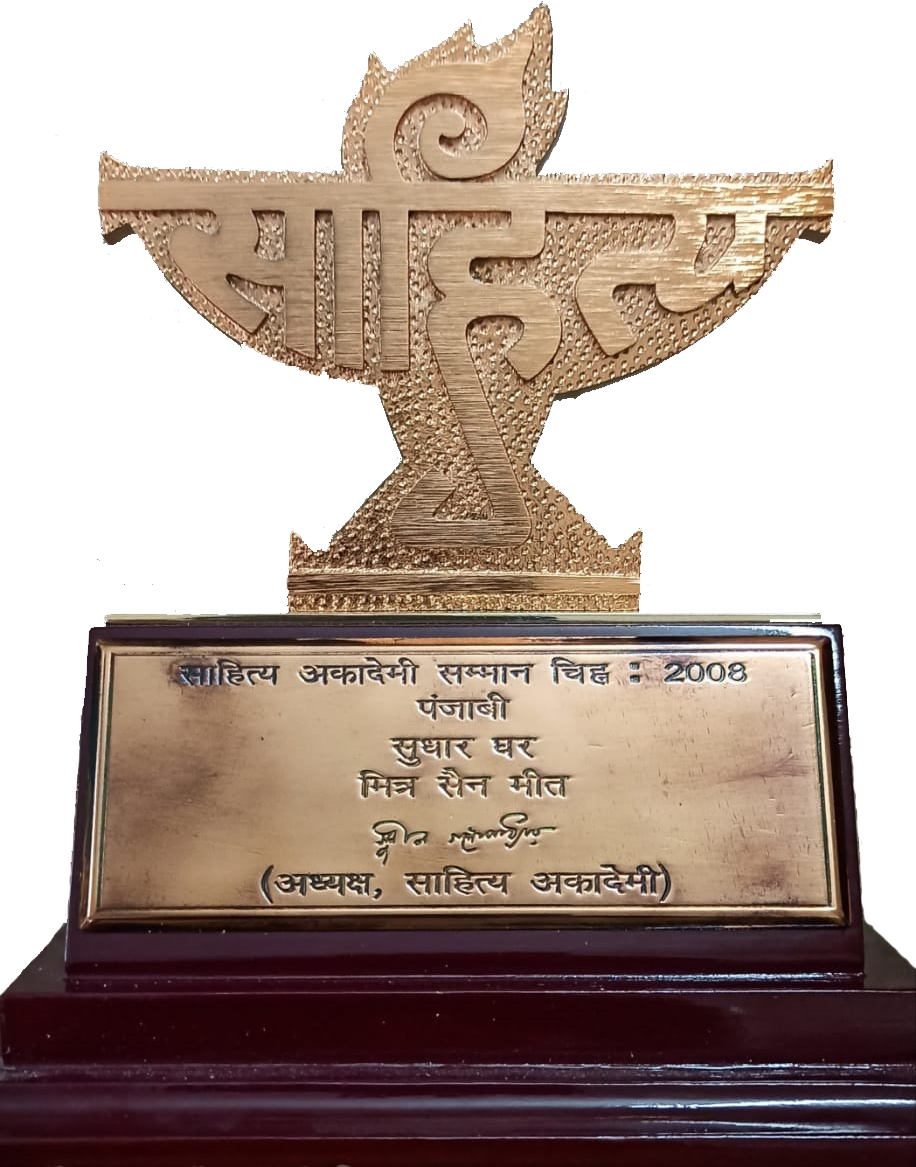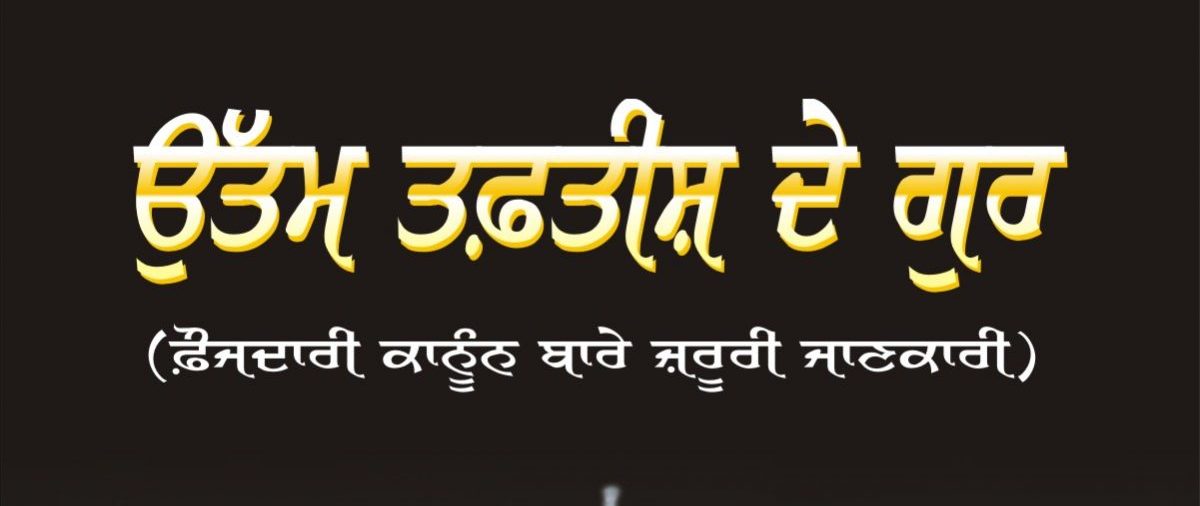ਦੋਸ਼ੀ ਦਾ ਭੇਤ ਖੋਲਦਾ ਬਿਆਨ (Extra Judicial Confession)
(Sections 25, 26 and 27 Evidence Act)
ਗ੍ਰਿਫ਼ਤਾਰੀ ਤੋਂ ਬਾਅਦ ਪੁਲਿਸ ਹੋਏ ਜ਼ੁਰਮ ਦੇ ਵੱਖ-ਵੱਖ ਪਹਿਲੂਆਂ ਤੋਂ ਜਾਣੂ ਹੋਣ ਲਈ ਦੋਸ਼ੀ ਤੋਂ ਪੁੱਛ-ਗਿੱਛ ਕਰਦੀ ਹੈ। ਪੁੱਛ-ਗਿੱਛ ਦੌਰਾਨ ਦੋਸ਼ੀ ਵੱਲੋਂ ਜ਼ੁਰਮ ਲਈ ਵਰਤੇ ਗਏ ਹਥਿਆਰਾਂ ਅਤੇ ਲੁੱਟ-ਖਸੁੱਟ ਵਾਲੇ ਮਾਲ ਆਦਿ ਨੂੰ ਲੁਕਾ ਛੁਪਾ ਕੇ ਰੱਖਣ ਵਾਲੀ ਥਾਂ ਬਾਰੇ ਜਾਣਕਾਰੀ ਦਿੱਤੀ ਜਾ ਸਕਦੀ ਹੈ। ਦੋਸ਼ੀ ਦੇ ਅਜਿਹੇ ਬਿਆਨ ਨੂੰ ‘ਦੋਸ਼ੀ ਦਾ ਭੇਤ ਖੋਲਦਾ’ ਬਿਆਨ ਆਖਿਆ ਜਾਂਦਾ ਹੈ। ਫੈਸਲੇ ਸਮੇਂ ਇਹ ਬਿਆਨ ਮਹੱਤਵਪੂਰਨ ਭੂਮਿਕਾ ਨਿਭਾਉਂਦਾ ਹੈ ਕਿਉਂਕਿ ਅਜਿਹੇ ਬਿਆਨ ਨੇ, ਹੋਰ ਸਬੂਤਾਂ ਨਾਲ ਮਿਲ ਕੇ, ਦੋਸ਼ੀ ਲਈ ਸਜ਼ਾ ਦਾ ਅਧਾਰ ਬਣਨਾ ਹੁੰਦਾ ਹੈ। ਇਸ ਲਈ ਕਾਨੂੰਨ, ਅਜਿਹਾ ਬਿਆਨ ਲਿਖਦੇ ਸਮੇਂ, ਬਿਆਨ ਲਿਖਣ ਵਾਲੇ ਪੁਲਿਸ ਅਫਸਰ ਨੂੰ ਕੁਝ ਦਿਸ਼ਾ ਨਿਰਦੇਸ਼ ਦਿੰਦਾ ਹੈ। ਜੇ ਪੁਲਿਸ ਅਫਸਰ ਇਨ੍ਹਾਂ ਦਿਸ਼ਾ ਨਿਰਦੇਸ਼ਾਂ ਦਾ ਪਾਲਣ ਨਹੀਂ ਕਰਦਾ ਤਾਂ ਅਦਾਲਤ ਬਿਆਨ ਨੂੰ ਭਰੋਸੇਯੋਗ ਨਹੀਂ ਮੰਨਦੀ ਅਤੇ ਇਸ ਅਣਗਹਿਲੀ ਦਾ ਦੋਸ਼ੀ ਨੂੰ ਲਾਭ ਪੁੱਜਦਾ ਹੈ।
ਦੋਸ਼ੀ ਦੇ ਬਿਆਨ ਦਾ ਸ਼ਹਾਦਤ ਵਿਚ ਮੰਨਣਯੋਗ ਹਿੱਸਾ
- (ੳ) ਦੋਸ਼ੀ ਦੇ ਭੇਤ ਖੋਲਦੇ ਬਿਆਨ ਦਾ ਉਹ ਹਿੱਸਾ, ਜਿਸਦੇ ਅਧਾਰ ਤੇ ਜ਼ੁਰਮ ਨਾਲ ਸੰਬੰਧਿਤ ਕਿਸੇ ‘ਤੱਥ ਦੀ ਬਰਾਮਦਗੀ’ ਹੁੰਦੀ ਹੋਵੇ, ਸ਼ਹਾਦਤ ਵਿੱਚ ਮੰਨਣਯੋਗ (admissible) ਹੈ।
Case : Dhananjoy Chatterjee @ Dhanna v/s State of W.B. 1994 (2) SCC 220 (SC)
Para “3. ….. We disregard the inadmissible part of the statement and take note only of that part of his statement which distinctly relates to the discovery of the articles pursuant to the disclosure statement made by the appellant as it is only so much of the statement made by a person accused of an offence while in custody of a police officer, ‘Whether it is confessional or not, as relates distinctly to the fact discovered which is capable of being proved and admitted into evidence. …….”
(ਅ) ਭੇਤ ਖੋਲਦੇ ਬਿਆਨ ਦਾ ਉਹ ਹਿੱਸਾ, ਜੋ ਦੋਸ਼ੀ ਦਾ ਹੋਏ ਜ਼ੁਰਮ ਵਿੱਚ ਭਾਗ ਲੈਣਾ ਸਿੱਧ ਕਰਦਾ ਹੋਵੇ ਤਾਂ ਸ਼ਹਾਦਤ ਵਿੱਚ ਨਹੀਂ ਪੜ੍ਹਿਆ ਜਾ ਸਕਦਾ। ਪਰ ਬਿਆਨ ਦੇ ਉਹ ਹਿੱਸੇ ਜਿਹੜੇ ਕਿਸੇ ਛੁਪਾ ਕੇ ਰੱਖੀ ਹੋਈ ਵਸਤੂ ਦੀ ਕੇਵਲ ਕਿਸਮ (nature) ਬਾਰੇ ਜਾਣਕਾਰੀ ਦਿੰਦੇ ਹੋਣ, ਸ਼ਹਾਦਤ ਵਿੱਚ ਪੜ੍ਹੇ ਜਾ ਸਕਦੇ ਹਨ।
Case : Sanjay @ Kaka v/s State (NCT of Delhi) 2001 Cri.L.J. 1231 (SC)
Para “27. Raising objections to the words “after commission of the offence” appearing in the disclosure statement of Vinod and “looted property” in the statement of Nawabuddin, the learned counsel for the appellants submitted that the whole of the statement was hit by Sections 24 to 26 of the Evidence Act and Section 162 of the Code of Criminal Procedure. We are not inclined to accept such a general statement. Even if the objectionable words (bracketed above) are deleted, the appellants cannot be conferred with any benefit which would entitle them to acquittal. It is not disputed that consequent upon the disclosure statements made, the articles mentioned therein were actually recovered at their instance from the place where such articles had been hidden by them. The mere use of the words “looted property” in relation to the articles seized which were found to have been taken away after the commission of the crime of murder and robbery would not change the nature of the statement. The words do not implicate the accused with the commission of the crime but refer only to the nature of the property hidden by them which were ultimately recovered consequent upon their disclosure statements. Hypertechnical approach, as projected by the defence counsel would defeat the ends of justice and have disastrous effect. The property recovered consequent upon the making of the disclosure statements has been proved to be the property of the deceased, stolen after the commission of the offence of robbery and murder”.
2. ਪ੍ਰਭਾਸ਼ਿਤ ਸ਼ਬਦ ‘ਤੱਥ ਦੀ ਬਰਾਮਦਗੀ’ ਦਾ ਅਰਥ: ਤੱਥ ਦੀ ਬਰਾਮਦਗੀ (discovery of fact) ਵਿੱਚ ਬਰਾਮਦ ਹੋਈ ਵਸਤੂ (object), ਉਹ ਜਗ੍ਹਾ (place) ਜਿੱਥੋਂ ਉਹ ਵਸਤੂ ਬਰਾਮਦ ਕਰਾਈ ਗਈ ਹੈ ਅਤੇ ਦੋਸ਼ੀ ਦਾ ਉਸ ਵਸਤੂ ਦੇ ਹੋਣ ਬਾਰੇ ਗਿਆਨ (knowledge) ਸ਼ਾਮਿਲ ਹੈ।
Case : Dhananjoy Chatterjee @ Dhanna v/s State of W.B. 1994 (2) SCC 220
Para “3. ….. The discovery of the fact in this connection includes the discovery of an object found, the place from which it is produced and the knowledge of the accused as to its existence. ……….”
ਬਿਆਨ ਲਿਖਦੇ ਸਮੇਂ ਅਪਣਾਈ ਜਾਣ ਵਾਲੀ ਪ੍ਰਕ੍ਰਿਆ
(ੳ) ਦੋਸ਼ੀ ਦਾ ਭੇਤ ਖੋਲਣ ਵਾਲੇ ਬਿਆਨ ਲਿਖਦੇ ਸਮੇਂ, ਕਿਸੇ ਨਿਰਪੱਖ ਗਵਾਹ ਨੂੰ ਤਫਤੀਸ਼ ਵਿੱਚ ਸ਼ਾਮਿਲ ਕਰਨਾ ਜ਼ਰੂਰੀ ਨਹੀਂ ਹੈ।
Case (i) : State Govt. of NCT of Delhi v/s Sunil and another 2001 Cri. L.J. 504 (1) (SC)
Para “17. ….. The said statement of A2 – Ramesh would fall within the purview of Section 27 of the Evidence Act as the fact discovered was that the nicker of the deceased was in the house of A2 – Ramesh. The presumption which can be drawn therefrom is that it was A2 who removed the nicker, and kept it in his house. A2 had no explanation to be offered about that circumstance”.
Para “19. In this context we may point out that there is no requirement either under Section 27 of the Evidence Act or under Section 161 of the Code of Criminal Procedure, to obtain signature of independent witnesses on the record in which statement of an accused is written. The legal obligation to call independent and respectable inhabitats of the locality to attend and witness the exercise made by the police is cast on the police officer when searches are made under Chapter VII of the Code. XXXX. ……..”
Case (ii) : Sanjay @ Kaka v/s State (NCT of Delhi) 2001 Cri.L.J. 1231 (SC)
Para “30. ….. We find no substance in the submission of the learned defence counsel that as no independent witnesses were associated with the recoveries, a doubt is created in the prosecution version …”
(ਅ) ਜੇ ਭੇਤ ਖੋਲਦੇ ਬਿਆਨ ਉੱਪਰ ਦੋਸ਼ੀ ਦੇ ਦਸਤਖਤ ਜਾਂ ਅੰਗੂਠਾ ਨਾ ਹੋਵੇ ਤਾਂ ਬਿਆਨ ਭਰੋਸੇਯੋਗ ਨਹੀਂ ਰਹਿੰਦਾ। (ਅਦਾਲਤਾਂ ਦਾ ਇੱਕ ਵਿਚਾਰ ਇਹ ਹੈ)
Case : Jackaran Singh v/s State of Punjab, 1995 Cri. L.J. 3992 (SC)
Para “8. ….. The absence of the singnatures or the thumb impression of an accused on the disclosure statement recorded under Section 27 of the Evidence Act detracts materially from the authenticity and the reliability of the disclosure statement.”
ਬਿਆਨ ਉੱਪਰ ਦੋਸ਼ੀ ਦਾ ਅੰਗੂਠਾ ਜਾਂ ਦਸਤਖਤਾਂ ਬਾਰੇ ਕਾਨੂੰਨੀ ਸਥਿਤੀ
ਦੋਸ਼ੀ ਦੇ ਭੇਤ ਖੋਲਦੇ ਬਿਆਨ ਉੱਪਰ ਦੋਸ਼ੀ ਦੇ ਦਸਤਖਤ ਜਾਂ ਅੰਗੂਠਾ ਲਗਵਾਉਣ ਬਾਰੇ ਅਦਾਲਤਾਂ ਦੇ ਵੱਖ-ਵੱਖ ਵਿਚਾਰ ਹਨ।
(ੳ) ਪਹਿਲਾ ਵਿਚਾਰ: ਜੇ ਭੇਤ ਖੋਲਦੇ ਬਿਆਨ ਉੱਪਰ ਦੋਸ਼ੀ ਦੇ ਦਸਤਖਤ ਜਾਂ ਅੰਗੂਠਾ ਨਾ ਹੋਵੇ ਤਾਂ ਬਿਆਨ ਭਰੋਸੇਯੋਗ ਨਹੀਂ
ਰਹਿੰਦਾ।
Case : Jackaran Singh v/s State of Punjab, 1995 Cri. L.J. 3992 (SC)
Para “8. ….. The absence of the singnatures or the thumb impression of an accused on the disclosure statement recorded under Section 27 of the Evidence Act detracts materially from the authenticity and the reliability of the disclosure statement.”
(ਅ) ਦੂਜਾ ਵਿਚਾਰ: ਭੇਤ ਖੋਲਦੇ ਬਿਆਨ ਉੱਪਰ ਦੋਸ਼ੀ ਦੇ ਦਸਤਖਤ ਜਾਂ ਅੰਗੂਠਾ ਹੋਣਾ ਜ਼ਰੂਰੀ ਨਹੀਂ ਹੈ।
Case : K.M. Ibrahim @ Bawa v/s State of Karnatka, 2000 Cri.L.J. 197 (Karnataka – HC)
Para “19. ….. We need to record here that S. 27 of the Evidence Act does not postulate that a voluntary statement must be signed by the maker of that statement or that the thumb impression must be affixed to it.”
ਸਾਂਝੀ ਥਾਂ ਤੋਂ ਹੋਈ ਬਰਾਮਦਗੀ
ਕਿਸੇ ਸਾਂਝੀ ਥਾਂ ਤੋਂ ਬਰਾਮਦ ਹੋਈ ਵਸਤੂ ਵੀ ਕਾਨੂੰਨ ਅਨੁਸਾਰ ਹੈ।
Case : Nisar Khan @ Guddu v/s State of Uttaranchal 2006 (1) RCR Criminal 818 (SC)
Para “8. As already noted, in the instant case the recovery of the arms was pursuant to the disclosure statement made by the accused immediately after the arrest and the offending arms were recovered at the place pointed out by each of the accused which were concealed under the sand and covered by the stones. The High Court in this regard fell in grave error by disbelieving the recovery memo solely on the ground that the place is a common place which is frequented by the public. The High Court failed to take notice that the recovery has been made from underneath the sand covered by the stones pursuant to the disclosure statement pointed out by each of the accused”.







More Stories
ਇਰਾਦਾ (ਧਾਰਾ 8 ਸ਼ਹਾਦਤ ਐਕਟ)
ਮਰਦੇ ਸਮੇਂ ਦਾ ਬਿਆਨ (Dying declaration)
ਦੋਸ਼ੀ ਅਤੇ ਵਸਤੂਆਂ ਦੀ ਸ਼ਨਾਖਤ ਪਰੇਡ (Test identification parade)